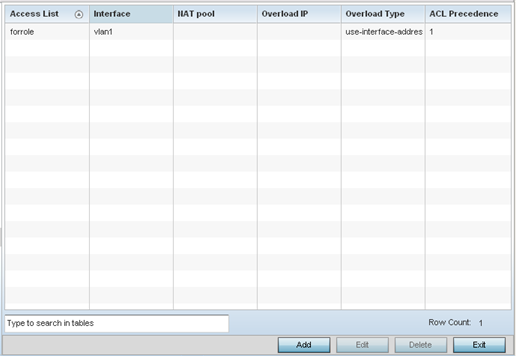Bridge NAT Configuration
Use Bridge NAT to manage Internet traffic originating at a remote site. In addition to traditional NAT functionality, Bridge NAT provides a means of configuring NAT for bridged traffic through an Access Point. NAT rules are applied to bridged traffic, and matching packets are NATed to the WAN link instead of being bridged on their way to the router.
Using Bridge NAT, a tunneled VLAN (extended VLAN) is created between the NoC and a remote location. When a remote client needs to access the Internet, Internet traffic is routed to the NoC, and from there routed to the Internet. This increases the access time for the end user on the client.
To resolve latency issues, Bridge NAT identifies and segregates traffic heading towards the NoC and outwards towards the Internet. Traffic towards the NoC is allowed over the secure tunnel. Traffic towards the Internet is switched to a local WLAN link with access to the Internet.
To define a NAT configuration that can be applied to a profile:
-
Select the tab from the Web UI.
- Expand
Security and select Bridge NAT.

- Review the following Bridge NAT
configurations to determine whether a new Bridge NAT configuration requires creation
or an existing configuration be modified or removed.
Access List
Lists the ACL applying IP address access/deny permission rules to the Bridge NAT configuration.
Interface
Lists the communication medium (outgoing layer 3 interface) between source and destination points. This is either an access point's pppoe1 or wwan1 interface or the VLAN used as the redirection interface between the source and destination.
NAT Pool
Lists the names of existing NAT pools used with the Bridge NAT configuration. This displays only when the Overload Type is NAT Pool.
Overload IP
Lists whether a single global address collectively supports numerous local addresses.
Overload Type
Lists the overload type used with the listed IP ACL rule. Set as either NAT Pool, One Global Address or Interface IP Address.
ACL Precedence
Lists the administrator assigned priority set for the ACL. The lower the value listed the higher the priority assigned to these ACL rules.
- Select Add to create a new bridge VLAN configuration, Edit to modify an existing configuration or Delete to remove a configuration.



